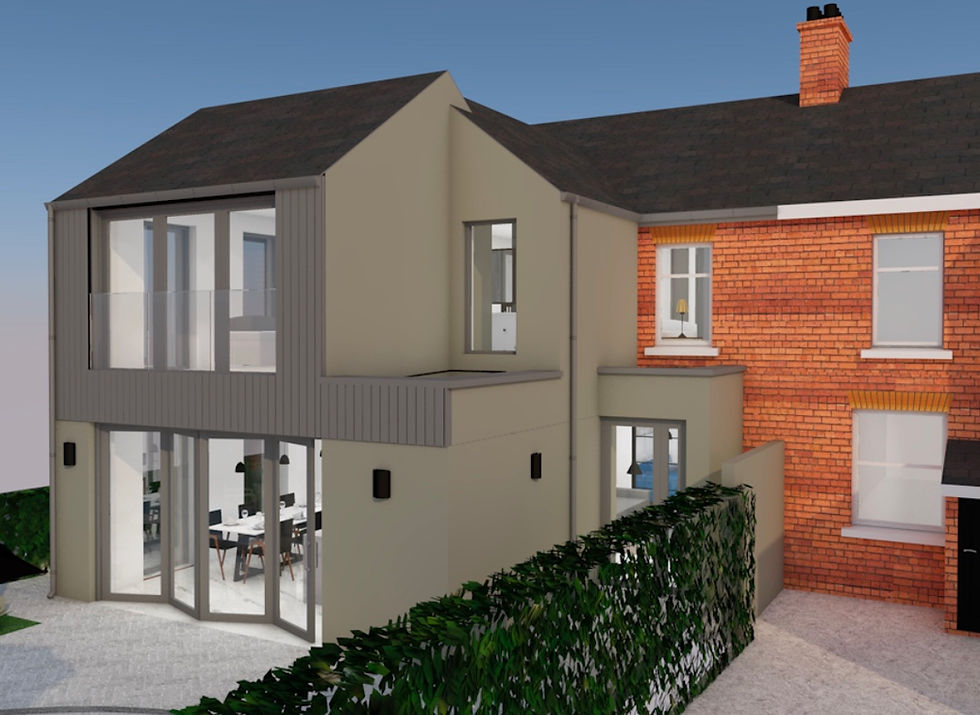Navigating the Challenges and Solutions in Restoring Listed Buildings for Modern Living
- Chris McIvor
- Sep 19
- 4 min read
Restoring listed buildings offers a mix of challenges and great opportunities. As our lifestyles change the call for modern living spaces often clashes with the vital need to preserve historical significance. Balancing the respect for a structure's architectural heritage with creating comfortable, modern homes is no small feat. In this post, we will explore the challenges involved in restoring listed buildings and present practical solutions for creating contemporary living spaces while honouring historical essence.
Understanding Listed Buildings
Listed buildings are structures recognised for their historical or architectural importance and they come with strict guidelines and regulations. These properties are categorised into grades:
Grade I: Of exceptional interest
Grade II*: Of particular importance
Grade II: Of national significance
Each category has its own preservation rules. The charm of listed buildings is clear. They frequently feature unique architectural details that tell rich stories about the past. However, the restoration journey can feel overwhelming, especially when factoring in modern living standards, energy efficiency, and safety regulations.
For example, listed buildings can have ceilings that are too low for modern standards or energy systems that do not meet current requirements.
Common Challenges in Restoring Listed Buildings
Regulatory Compliance
One of the biggest hurdles in restoring listed buildings is staying compliant with local regulations and preservation guidelines. Each listed property has strict restrictions on changes that can be made to maintain its historical integrity.
The process of securing approvals can be slow and cumbersome. In some cases, obtaining the necessary permissions can add weeks or even months to the restoration timeline.
Structural Integrity
Many listed buildings date back decades or even centuries, which often means their structural integrity is weakened. Common issues such as dampness, subsidence and rotting wood can complicate the modernisation process. For instance, the Heritage Lottery Fund estimates that 60% of historic buildings suffer from damp-related problems.
Additionally, sourcing original materials can be challenging and sometimes impossible, making it essential to find suitable alternatives that match the original.
Balancing Historical Features with Modern Needs
Listed properties commonly feature cherished architectural elements like intricate moldings or unique fireplaces. Integrating modern conveniences and technologies, such as effective insulation and updated plumbing can become a complex balancing act.
For example, retrofitting a listed home with underfloor heating requires careful planning to ensure that the installation does not damage original flooring or other historical aspects.
Financial Considerations
Restoring a listed building often incurs significant costs. Specialists' skills, high-quality materials and time-consuming work can add up quickly. Homeowners may face unexpected expenses if they discover hidden issues during renovations. According to surveys, more than 70% of listed building restorations go over budget due to unforeseen repairs.
Accessibility
Older listed buildings often lack adequate access for individuals with disabilities. Making these properties compliant with modern accessibility standards while preserving their original charm can be very challenging.
For example, fitting ramps may disrupt historical features and aesthetics.
Solutions for Successful Restoration
Engage Heritage Specialists
Working with conservation architects or heritage consultants is crucial for a successful restoration. These professionals understand the regulations involved and can offer valuable insights on how to preserve a building while meeting modern standards. They can guide the planning process and ensure compliance with preservation guidelines, saving time and frustration.
Conduct Thorough Assessments
Before starting a restoration project, it is vital to conduct a detailed structural assessment. This helps uncover issues like dampness, weaknesses or the state of original materials early on. For instance, a thorough inspection may reveal that a roof requires immediate attention, allowing for appropriate budgeting.
Embrace Innovative Design Solutions
Restorations should not shy away from incorporating contemporary design elements. For example, introducing double-glazed windows that mimic the original style can enhance energy efficiency without sacrificing aesthetics. Also using modern insulation materials discreetly can keep with earlier designs while ensuring comfort.
Secure Financial Assistance
Homeowners should research grants, subsidies or financial incentives available for restoring listed buildings. Numerous governments and organisations support heritage conservation, offering financial help or tax relief for those dedicated to preserving their architectural heritage. This support can significantly reduce the financial burden of restoration.
Prioritise Accessibility
Improving accessibility should be a priority during restoration. Simple adjustments like widening doorways, creating ramps or installing discreet elevators can make properties more inclusive while respecting their character. Thoughtful adaptations can ensure that all occupants enjoy the building’s history and charm.

Final Thoughts
Restoring listed buildings for today’s living is a complex journey filled with challenges that demand careful planning and creative solutions. While regulatory compliance, structural integrity and financial constraints can pose significant obstacles, a thoughtful approach and the right expertise can effectively address them.
By embracing modern design solutions alongside the historical features of these buildings, we can create living spaces that honour the past while meeting today’s needs. As communities grow and evolve, preserving our architectural heritage becomes vital, ensuring that the stories held in these structures continue to enrich our lives for generations to come.
Contact iMac architecture today to discuss how we can help you transform your historic property into a home that honours the past while embracing the future.





Comments